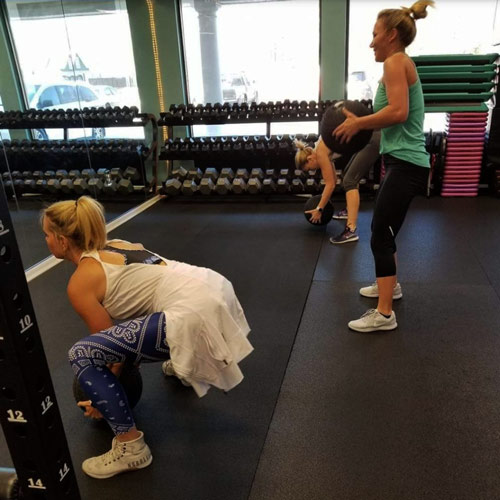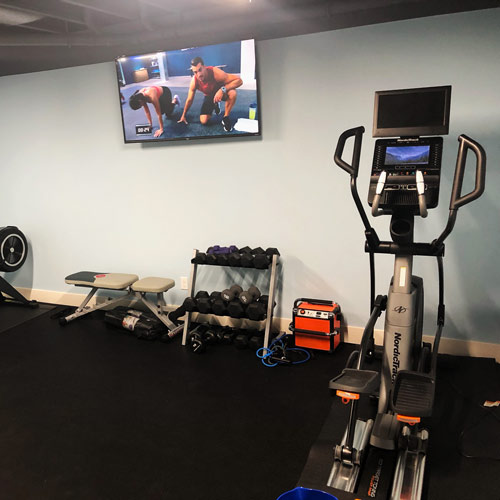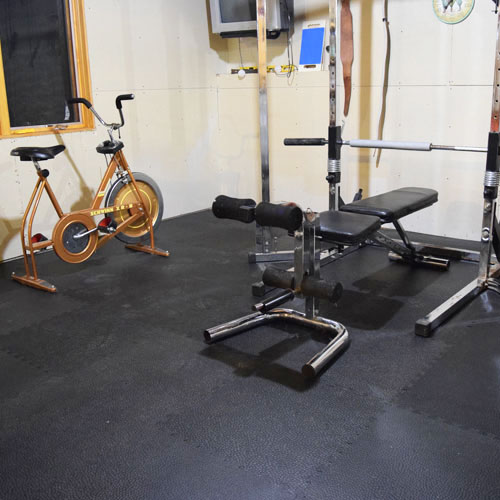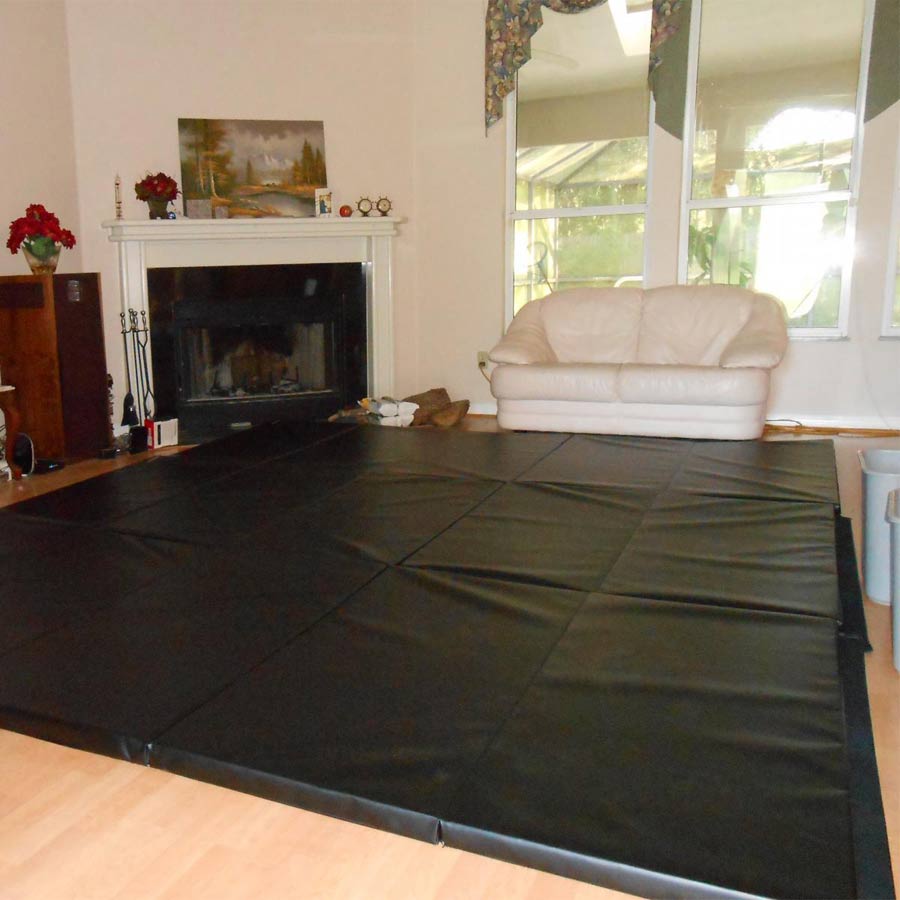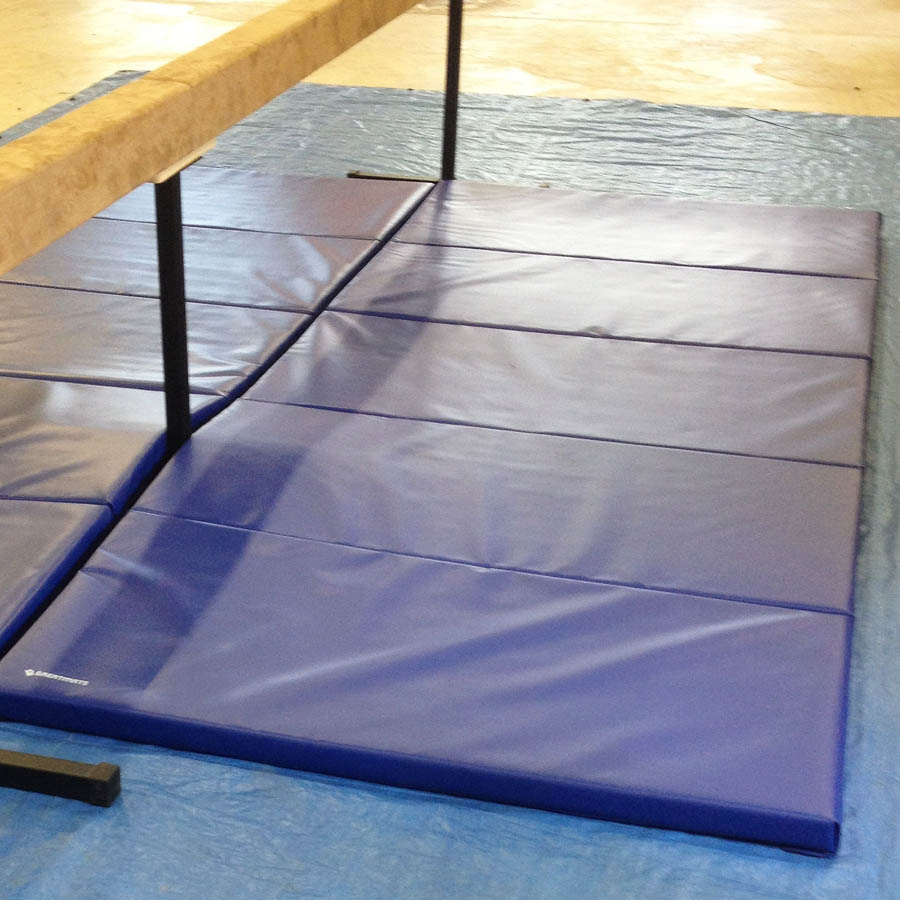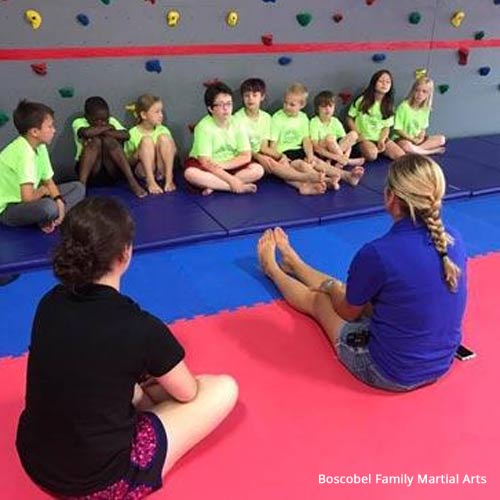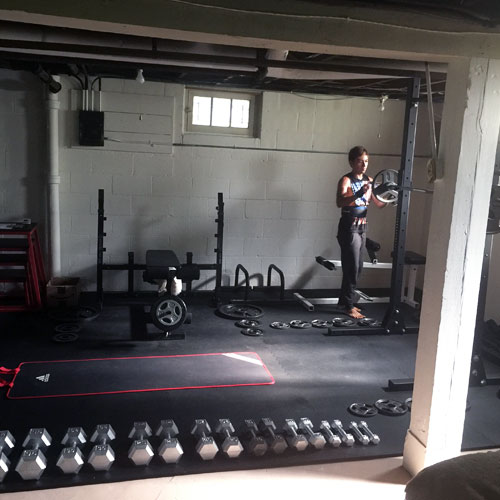What's the Difference Between Rubber and Foam Gym Mats?
Related Product: Home Gym Flooring Tile Pebble 3/8 Inch x 2x2 Ft.
Both foam and rubber flooring options have some advantages for use in a gymnasium or a workout room, including being non-absorbent. Here are some of the best ways to deploy rubber and foam floors.
What Are Advantages of Foam Flooring Gym Mats?
EVA and other kinds of foam have a nice level of cushioning in a durable and lightweight design, creating a comfortable sports floor. Some of the best use cases for foam for exercise area floors include:- Yoga
- Cardio
- Ground-based workouts
- Support for exercise machines
- Cheerleading and gymnastics
- Martial arts
Those who choose foam gym mats know there are multiple advantages to using foam, including the following.
Ease of installation. Because EVA foam has the flexibility to it, installations go smoothly.
The edges often have a jigsaw puzzle design that creates an interlock option to connect the tiles without glue. These tiles pop together with very little effort required.
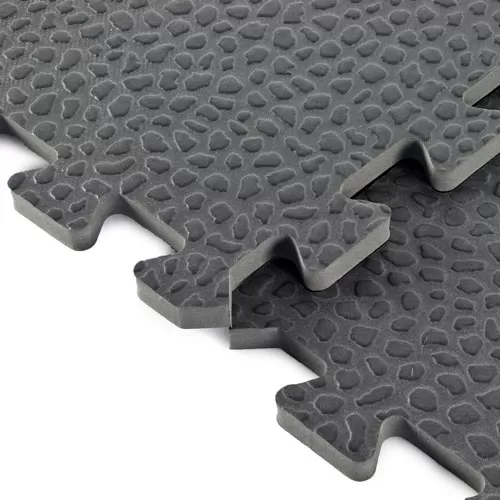 The Home Gym Flooring Tile is an example of a puzzle style foam mats. Those using it for an exercise space at home will appreciate how easy it is to assemble and disassemble if they want to return to the original subfloor after the workout.
The Home Gym Flooring Tile is an example of a puzzle style foam mats. Those using it for an exercise space at home will appreciate how easy it is to assemble and disassemble if they want to return to the original subfloor after the workout.
Multiple layout options. Foam interlocking tiles will go directly over a wide range of subflooring materials, including concrete, hardwood, vinyl, ceramic, and laminate. This makes it ideal for a home gym, where homeowners often turn a spare room into a workout space.
Textured surface. The best EVA foam tiles often have a slight texture on the surface, providing a sure grip for athletes. Even if the tile becomes wet, the anti-slip texture yields a safe space.
Cost. Rubber is a cost-effective type of flooring for a home or commercial gym, but EVA foam often has an even lower cost. To find the best deal, always calculate the price per square foot to ensure a fair comparison between the rubber and foam tiles.
Multiple colors. Installers appreciate foam because of the wide range of color options available. Some foams have extremely bright colors, which are perfect for creating patterns in the home or commercial gym floor.
Soft. EVA foam has some density to it, allowing it to stand up to exercise machines, while other types of foam often emphasize cushioning over density. These soft foams create a perfect landing space for athletes who jump frequently. And in cases of the firmer varieties of EVA foam, they can even be stable enough to use as a yoga mat.
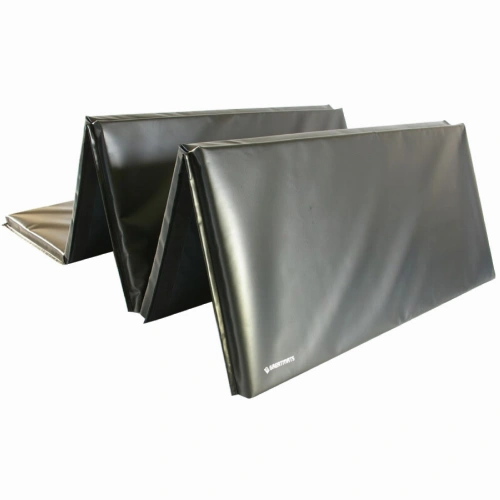 Gymnasts and cheerleaders appreciate the 4x10-foot Gym Mats product. These folding mats consist of a 2-inch thick polyethylene (PE) foam, which compresses under weight before bouncing back to its original shape.
Gymnasts and cheerleaders appreciate the 4x10-foot Gym Mats product. These folding mats consist of a 2-inch thick polyethylene (PE) foam, which compresses under weight before bouncing back to its original shape.
A heavy-duty 18-ounce vinyl layer protects the PE foam and helps provide the stability athletes need to stand and jump on the exercise mat.
What Are Advantages of Rubber Gym Mats?
Rubber flooring used in a gymnasium provides the highest level of durability for exercise equipment. Thick rubber mats are so durable that horse owners often use them in a horse stall, as they can stand up to all of the abuse these large animals can throw at them.This durability gives fitness center owners and homeowners great value when installing it under gym equipment. Some of the most common use cases for rubber in a workout space include:
- Weightlifting
- Heavy exercise machines
- Plyometric exercises
- High-intensity workouts
- Insulating against cold cement
Here are some of the advantages of making use of rubber flooring as gym mats.
Range of thicknesses: Rubber is available in many different thicknesses, but aggressive weightlifters will want to pick an extra thick flooring of at least 3/4 inches. Thick rubber protects the subfloor from dropped barbells or dumbbells, while also reducing noise. A 3/8-inch thickness is suitable for most home gyms while a thinner mat may be budget-friendly for gyms for cardio exercise.
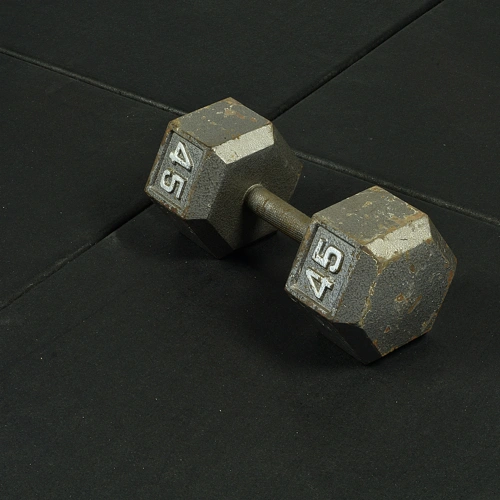 The UltraTiles offer 1 inch of thickness, creating a nice high-density workout station for weightlifting. These rubber tiles have a flat edge, so installers can lay multiple mats side by side tightly with the Quad Blok installation method.
The UltraTiles offer 1 inch of thickness, creating a nice high-density workout station for weightlifting. These rubber tiles have a flat edge, so installers can lay multiple mats side by side tightly with the Quad Blok installation method.
No glue needed:
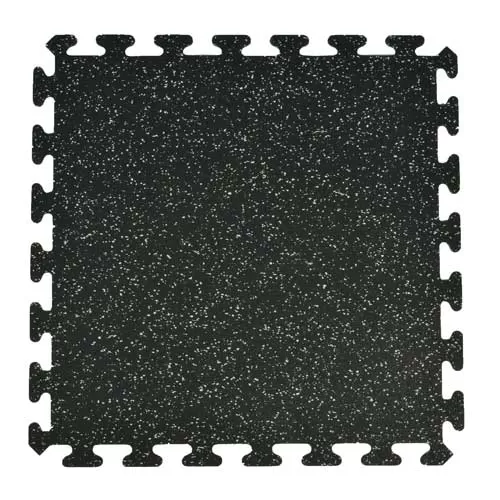 These interlocking tiles have puzzle-style edges, allowing the mats to pop together tightly without needing adhesive. Each 2x2 foot tiles is 3/8 inch thickness that is ideal for most home gyms.
These interlocking tiles have puzzle-style edges, allowing the mats to pop together tightly without needing adhesive. Each 2x2 foot tiles is 3/8 inch thickness that is ideal for most home gyms.
Cushioning but durable:
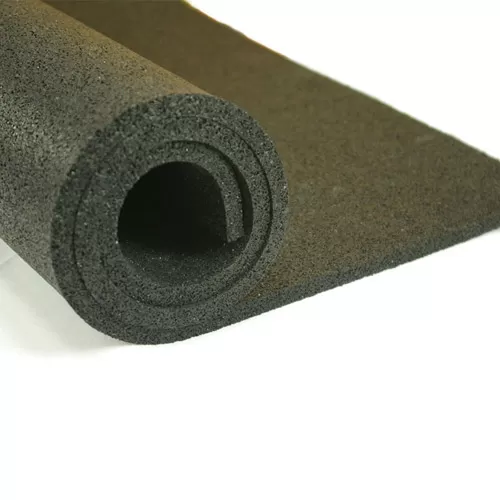 The design of the Plyometric Rubber Roll has to cushion in mind for plyometric workouts. Made of a low-density rubber, it measures 1/2 inches in thickness, while giving athletes the sure grip and footing they need to make the quick movements for plyometric workouts.
The design of the Plyometric Rubber Roll has to cushion in mind for plyometric workouts. Made of a low-density rubber, it measures 1/2 inches in thickness, while giving athletes the sure grip and footing they need to make the quick movements for plyometric workouts.
Rubber does not soak up sweat or other odors, which keeps it cleaner than some other floors used in exercise areas. When it’s time to clean the rubber gym floor, just use water and a gentle cleanser to have it ready for the next session.
